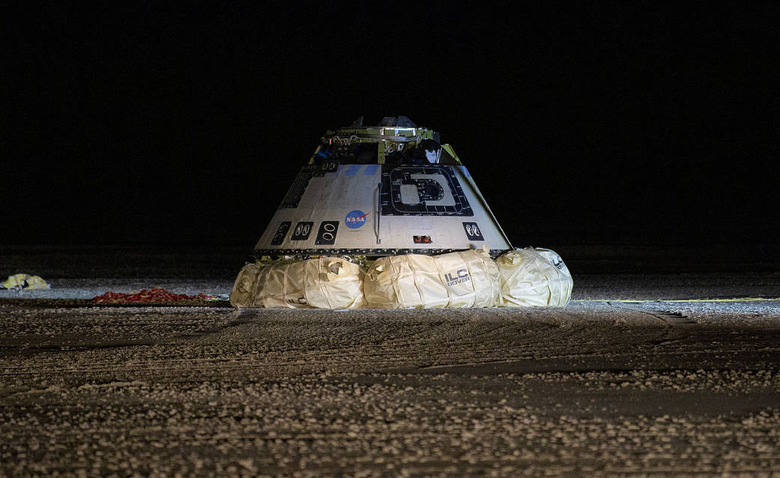Boeing's Starliner Flew To The International Space Station... In A Simulation
NASA's Commercial Crew program took a great deal longer than expected to produce safe and efficient transportation to the International Space Station. Both SpaceX with its Crew Dragon and Boeing's Starliner faced huge delays that set the program back by many months. Eventually, Crew Dragon fulfilled SpaceX's promise to NASA, but Boeing is still lagging far behind. The company's failed attempt at an uncrewed flight to the ISS resulted in a long list of changes requested by NASA. Now, as Crew Dragon is already taking crews of astronauts to and from the space station, Boeing has finally completed a trip to the orbiting laboratory... in a simulation.
In a new blog post, NASA offers an update on the Commercial Crew program with a story of Boeing and NASA completing a mock mission to the ISS using the systems that are featured on the actual Starliner spacecraft. The "integrated mission dress rehearsal," as NASA calls it, was a test of an uncrewed flight to the space station and it played out at Boeing's Avionics and Software Integration Lab in Houston.
The mock mission comes with all of the bells and whistles of an actual flight, from takeoff to landing. The systems used for the various aspects of the launch, flight, docking, powering down, powering back up, undocking, landing, and powering down for good were all put through their paces.
"The AMR is one of many examples of Boeing's commitment to flying NASA astronauts as safely as possible," NASA's Chad Schaeffer said in a statement. "The joint Boeing and NASA system and software teams have worked very closely to prepare for the OFT-2 mission, including building stronger relationships and improved processes that are paying dividends for our commercial crew missions."
OFT-2, or the Orbital Flight Test... the 2nd, will be Boeing's opportunity to show that it learned from its mistakes with the first failed uncrewed mission to the ISS. During that trip, the spacecraft launched as intended but an issue with the spacecraft's internal clock led it to burn way too much fuel once it was in space. There wasn't enough fuel left to send it to the ISS and back home, so the mission was aborted and the spacecraft landed safely back on Earth without completing its most important objective.
Following that mission, NASA conducted a full review of Boeing's work with Starliner and produced a massive list of things it wanted to be fixed or changed. NASA seems satisfied that it has addressed all of those issues and the next test flight is scheduled for July 30th. Assuming that flight goes well (which is actually a pretty big assumption, given the circumstances) we should expect a crewed test flight sometime in early 2022. If that mission goes well, Starliner could be fully certified for use by NASA next year, clearing the way for it to regularly ferry astronauts into space and back home.
